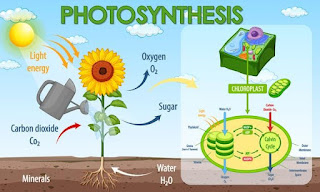Reasons for falling IiL
The significance of ‘Health’
We have heard the
word ‘health’ being used
quite frequently. We use it
ourselves as well as for
people around us when we
say things like ‘my grandmother’s health
is not good’. Our teachers use it when they
scold us saying ‘this is not a healthy
attitude’. Now, the question what exactly
does the word ‘health’ mean? If we think
about it, we realise that it always implies
the idea of ‘being well’. We can think of
this well-being as ability for effective
functioning. Incase of our grandmothers,
their being able to go out to the market or
to visit neighbours is ‘being well’, and not
being able to do such things is ‘poor health’.
Being interested in following the
teaching in the classroom so that we can
understand the world would be called a
‘healthy attitude’; while not being interested
would be called the opposite.
‘Health’ is therefore a state of being
well enough to function physically,
mentally and socially with optimum
efficiency.
Personal and community issues,
both matter for health:
If health means a state of physical,
mental and social well-being, it cannot be
something that each one of us can achieve
entirely on our own. The health of all
organisms will depend on their
surroundings or environment. The
environment includes the physical
environment. For example every one’s
health is at risk in a cyclone. But even more
importantly, human beings live in societies.
Our social environment, therefore, is an
important factor in our individual health.
We live in villages, towns or cities. In such
places, even our physical environment is
decided by our social environment.
Consider what would happen if no agency
is ensuring that garbage is collected and
disposed. What would happen if no one
takes responsibility for clearing the drains
and ensuring that water does not collect in
the streets or open spaces? So, if there is a
great deal of garbage thrown in our streets,
or if there is open drain water lying stagnant
around where we live, the possibility of ill
health. Therefore, cleanliness of
surroundings is very important for
individual health.
Distinctions between ‘Healthy’
and ‘Disease free’
If this is what we mean by ‘health’,
what do we mean by ‘disease’? The word is
actually self-explanatory – we can think of
it as disturbed ease. Disease, in other
words, literally means being
uncomfortable. However, the word is used
in a more limited meaning. We talk of
disease when we can find a specific and
particular cause for discomfort. This does
not mean that we have to know the absolute
final cause; we can say that someone is
suffering from diarrhoea without knowing
exactly what has caused the loose motions.
We can now easily see that it is possible to
be in poor health without actually suffering from a particular disease. Simply not
being diseased is not the same as being
healthy. ‘Good health’ for a dancer may
mean being able to stretch his/her body into
difficult but graceful positions. On the
other hand, good health for a musician may
mean having enough breathing capacity in
his/her lungs to control the notes from his/
her flute. To have the opportunity to realise
the unique potential in all of us is also necessary for good health. So, we can be in
poor health without there being a simple
cause in the form of an identifiable disease.
This is the reason why, when we think about
health, we think about societies and communities. On the other hand, when we think
about disease, we think about individual
sufferers.
z State any two conditions essential
for good health.
z State any two conditions essential
for being free of disease.
Disease and its causes:
What does disease look like ?
Activity:
Form a group with five students. List
out some diseases and their symptoms. Let
us now think a little more about diseases.
In the first place, how do we know that there
is a disease? In other words, how do we
know that there is something wrong with
the body? There are many tissues in the
body. These tissues make up physiological
systems or organ systems that carry out
body functions. Each of the organ systems
has specific organs as its parts, and it has
particular functions. So, the digestive
system has the stomach and intestines, and
it helps to digest food taken in from outside
the body. The musculoskeletal system,
which is made up of bones and muscles,
holds the body parts together and helps the
body move.
When there is a disease, either the
functioning or the appearance of one or
more systems of the body will change for
the worse.
These changes give rise to symptoms
and signs of disease. Symptoms of disease
are the things we feel as being ‘wrong’. So,
we have headache, cough, loose motions
and wound with pus; these are all symptoms.
These indicate that there may be a
disease, but they do not indicate what the
disease is. For example, a headache may
mean just examination stress or, very
rarely, it may mean meningitis, or any one
of a dozen different diseases.
Signs of disease are what physicians
will look for on the basis of the symptoms.
Signs will give a little more definite
indication of the presence of a particular
disease. Physicians will also get laboratory
tests done to pinpoint the disease further.
Acute and chronic diseases:
The manifestations of disease will be
different depending on a number of factors.
One of the most obvious factors that
determine how we perceive the disease is
its duration. Some diseases last for only
very short periods of time, and these are
called acute diseases. We all know from
experience that the common cold lasts only
a few days. Other ailments can last for a
long time, even as much as a lifetime, and
are called chronic diseases. An example is
the infection causing elephantiasis, which
is very common in some parts of India.
Acute Chronic diseases and poor
health:
As we can imagine, acute and chronic
diseases have different effects on our
health. Any disease that causes poor
functioning of some part of the body will
affect our general health as well. This is
because all functions of the body are
necessary for general health. But an acute
disease, which is terminated very soon, will
not have time to cause major effects on
general health, while a chronic disease will
do so.
As an example, think about a cough
and cold, which all of us have from time to
time. Most of us get better and become well
within a week or so. And there are no bad
effects on our health. We do not lose
weight, we do not become short of breath,
we do not feel tired all the time because of
a few days of cough and cold. But if we get
infected with a chronic disease such as
tuberculosis of the lungs, then being ill
over the years does make us lose weight
and feel tired all the time. We may not go
to school for a few days if we have an acute
disease. But a chronic disease will make it
difficult for us to follow what is being
taught in school and reduce our ability to
learn. In other words, we are likely to have
prolonged ill health if we have a chronic
disease. Chronic diseases therefore, have
very drastic, long-term effects on people’s
health as compared to acute diseases.
Causes of diseases:
What are the causes for diarrhoea,
T.B.? How do they spread? When we think
about causes of diseases, we must
remember that there are many levels of
such causes. Let us look at an example. If
there is a baby suffering from loose
motions, we can say that the cause of the
loose motions is an infection with a virus.
So the immediate cause of the disease is a
virus.
But the next question is – where did
the virus come from? Suppose we find that
the virus came through unclean drinking
water. But many babies must have had this
unclean drinking water. So, why is it that
one baby developed loose motions when
the other babies did not?
One reason might be that this baby is
not healthy. As a result, it might be more
likely to have disease when exposed to such
risk, whereas healthier babies would not.
Why is the baby not healthy? Perhaps
because it is not well nourished and does
not get enough food. So, lack of good
nourishment becomes a second level cause
of the disease the baby is suffering from.
Further, why is the baby not well nourished?
Perhaps because it is from a household
which is poor.
It is also possible that the baby has
some genetic difference that makes it more
likely to suffer from loose motions when
exposed to such a virus. Without the virus,
the genetic difference or the poor
nourishment alone would not lead to loose
motions. But they do become contributory
causes of the disease.
Infectious and non-infectious
causes:
As we have seen, it is important to
keep public health and community health
factors in mind when we think about causes
of diseases. We can take that approach a
little further. It is useful to think of the
immediate causes of disease as belonging
to two distinct types. One group of causes
is the infectious agents, mostly microbes
or micro-organisms.
Diseases where microbes are the
immediate causes are called infectious
diseases. This is because the microbes can
spread in the community, and the diseases
they cause will spread with them.
z Do all diseases spread to people
coming in contact with a sick person?
z What are the diseases that are not
spreading?
z How would a person develop those
diseases that do not spread by contact
with a sick person?
On the other hand, there are also
diseases that are not caused by infectious
agents. Their causes vary, but they are not
external causes like microbes that can
spread in the community. Instead, these are
mostly internal, non-infectious causes.
Infectious Diseases
Infectious agents:
We have seen that the entire diversity seen in the living world can be classified into a
few groups. This classification is based on common characteristics between different
organisms. Organisms that can cause disease are found in a wide range of such categories
of classification. Some of them are viruses, some are bacteria, some are fungi, some are
single-celled animals or protozoans. Some diseases are also caused by multicellular
organisms, such as worms and insects of different kinds.
Earthworms
Bugs
Common examples of diseases
caused by viruses are the common cold,
influenza, dengue fever and AIDS. Diseases
like typhoid fever, cholera, tuberculosis and
anthrax are caused by bacteria. Many
common skin infections are caused by
different kinds of fungi. Microorganisms
like protozoan cause diseases like Malaria
(Plasmodium) and Kala-Azar (Leishmania).
All of us have also come across
intestinal worm infections, as well as
diseases like elephantiasis caused by
different species of worms.
Why is it important that we think of
these categories of infectious agents? The
answer is that these categories are
important factors in deciding what kind of
treatment to use. Members of each one of
these groups – viruses, bacteria, and so on
– have many biological characteristics in
common.
Bacteria
Organ-specific and Tissue specific manifestations:
The disease-causing microbes enter
the body through these different means.
Where do they go then? The body is very
large when compared to the microbes. So
there are many possible places, organs or
tissues, where they could go. Do all
microbes go to the same tissue or organ,
or do they go to different ones?
Different species of microbes seem
to have evolved to home in on different
parts of the body. In part, this selection is
connected to their point of entry. If they
enter from the air via the nose, they are
likely to go to the lungs. This is seen in the
bacteria causing tuberculosis. If they enter
through the mouth, they can stay in the gut
lining like typhoid causing bacteria. Or they
can go to the liver, like the viruses that
cause jaundice.
The signs and symptoms of a disease
will thus depend on the tissue or organ
which the microbe targets. If the lungs are
the targets, then symptoms will be cough
and breathlessness. If the liver is targeted,
there will be jaundice. If the brain is the
target, we will observe headaches,
vomiting, fits or unconsciousness. We can
imagine what the symptoms and signs of
an infection will be if we know what the
target tissue or organ is, and the functions
that are carried out by this tissue or organ.
It is also important to remember that
the severity of disease manifestations
depend on the number of microbes in the
body. If the number of microbes is very
small, the disease manifestations may be
minor or unnoticed. But if the number of
the same microbe is large, the disease can
be severe enough to be life-threatening.
The immune system is a major factor that
determines the number of microbes
surviving in the body.
Principles of treatment:
What are the steps taken by your
family when you fall sick? Have you ever
thought why you sometimes feel better if
you sleep for some time? When does the
treatment involve medicines?
Based on what we have learnt so far,
it would appear that there are two ways to
treat an infectious disease. One would be
to reduce the effects of (or control) the
disease and the other to kill the cause of
the disease. For the first, we can provide
treatment that will reduce the symptoms.
The symptoms are usually because of
inflammation. For example, we can take
medicines that bring down fever, reduce
pain or loose motions. We can take bed rest
so that we can conserve our energy. which
may be directed to healing.
But this kind of symptom-directed
treatment by itself may not kill the
infecting microbe go away and the disease
may not be cured. For that, we need to kill
the disease causing microbes.
How do we kill microbes? One way
is to use medicines that kill microbes. We
have seen earlier that microbes can be
classified into different categories. They
are viruses, bacteria, fungi and protozoa.
Each of these groups of organisms will have
some essential biochemical life process
which is peculiar to that group and not
shared with the other groups. These
processes may be pathways for the
synthesis of new substances or medication.
These pathways will not be used by
us either. For example, our cells may make
new substances by a mechanism different
from that used by bacteria. We have to find
a drug that blocks the bacterial synthesis
of pathway without affecting our own. This
is what is achieved by the antibiotics that
we are all familiar with. Similarly, there are
drugs that kill protozoa such as the malarial
parasite.
Principles of prevention:
All of what we have talked about so
far deals with how to get rid of an infection
in someone who has the disease. But there
are three limitations of this approach to
dealing with infectious disease. The first
is that once someone has a disease, their
body functions are damaged and may never
recover completely. The second is that
treatment will take time, which means that
someone suffering from a disease is likely
to be bedridden for some time even if we
can give proper treatment. Over a period
of time the third is that the person suffering
from an infectious disease can serve as the
source from where the infection may
spread to other people. This leads to the
multiplication of the above difficulties. It
is because of such reasons that prevention
of diseases is better than their cure.
How can we prevent diseases? There
are two ways, one general and one specific
to each disease. The general ways of
preventing infections mostly relate to
preventing exposure. How can we prevent
exposure to infectious microbes?
If we look at the means of their
spreading, we can get some easy answers.
For airborne microbes, we can prevent
exposure by providing living conditions that
are not overcrowded. For water-borne
microbes, we can prevent exposure by
providing safe drinking water. This can be
done by treating the water to kill any
microbial contamination. For vector-borne
infections, we can provide clean
environments for example, free of breeding
ground of infectious disease causing
organisms and their vectors. In other words,
public hygiene is one basic key to the
prevention of infectious diseases.

































